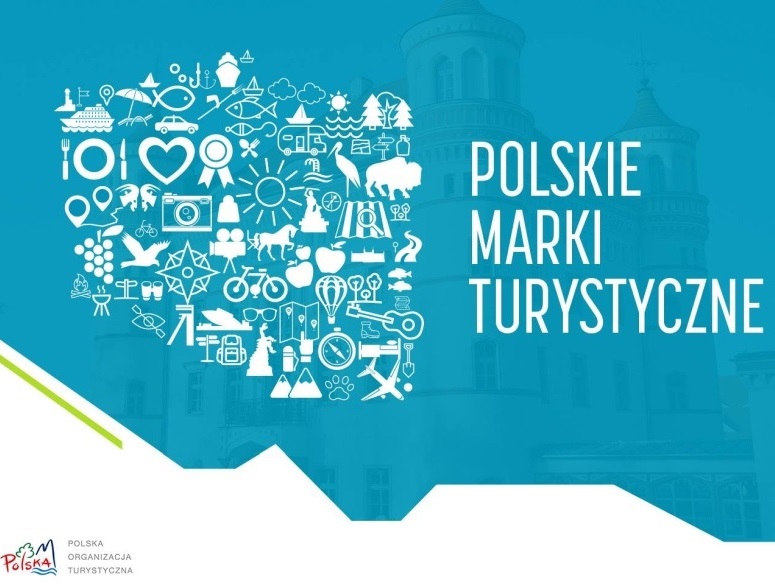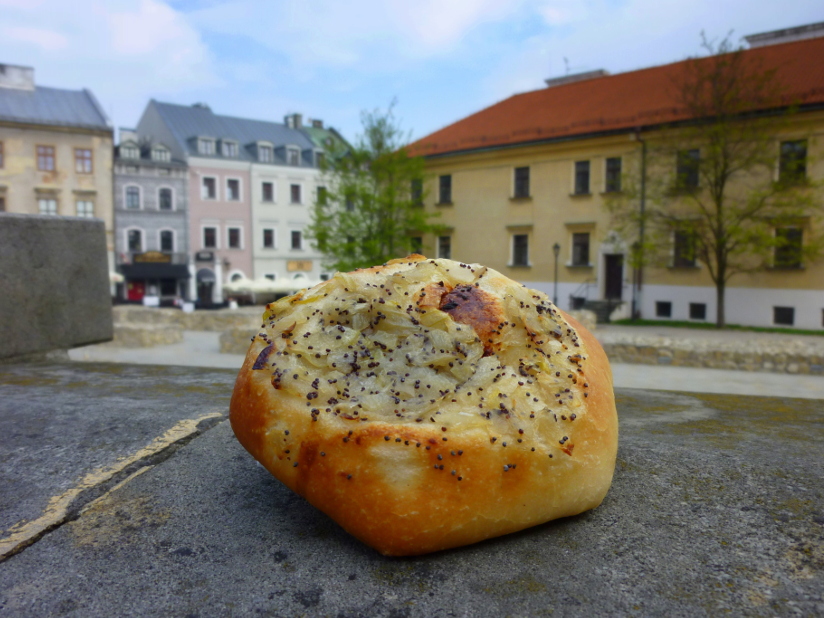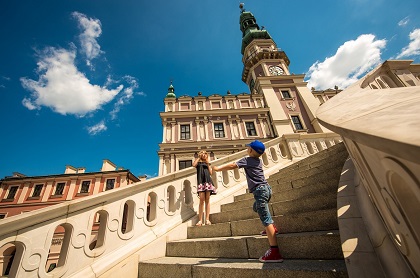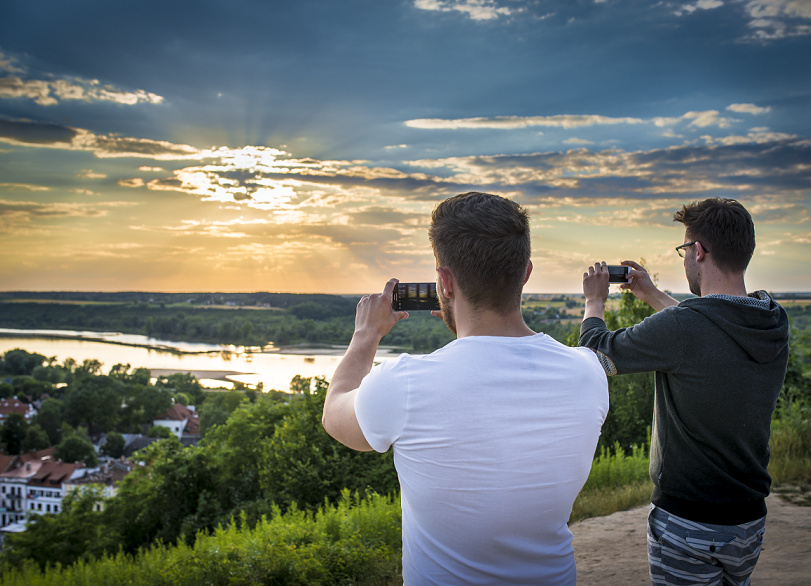News
-
Tour de Pologne Women 2025
- 2025-08-12
- 2025-08-14
The third edition of Tour de Pologne Women will take place from 12 to 14 August 2025 in the Lublin Voivodeship and the Roztocze region. Three days, three stages and hundreds of kilometres of picturesque routes – the race will pass through Zamość, Chełm, Nałęczów and Kraśnik. Thanks to the r ...
-
Coach Ticket Sales at the Lublin Tourist and Cultural Information Centre
Published: 29/05/2025Coach Ticket Sales Now Available at the Lublin Tourist and Cultural Information Centre
-
Lubelskie 2025 cultural events calendar
- 2025-01-01
- 2025-12-31
We encourage you to discover the extraordinary tourism and cultural wealth of the Lublin region in 2025! Lubelskie is a place where tradition meets modernity, and every month is filled with unique events that attract visitors from across Poland and around the world. Lublin, as the heart of the regi ...
Mobile apps that will help you to visit Lubelskie
Do you like using mobile apps while traveling? We have great news for you. You and your phone can set off on an adventurous trip to the Lublin Region. Thanks to the free mobile apps, you'll easily discover natural and cultural treasures and visit the most beautiful parts of the region. Now you will not miss anything!
Lublin Old Town - Audioguide
app: Audioprzewodnik Lublin Stare Miasto
language: Polish, English, German, Ukrainian, Russian
system: iOS, Android
During about an hour-long walk you will learn about the most interesting parts of the city's history, as well as the most crucial monuments and landmarks located at the Old Town and it's area. The tour is possible in 5 linguistic versions: Polish, English, German, Ukrainian, and Russian. The trail that starts and ends in the Lublin Tourist and Cultural Information Centre (Jezuicka 1/3 street) will show you the places like the Market Square, Po Farze Square, Dominican Church, Archcathedral, post-Bridgettine Church, Julisz Osterwa Theatre, Litewski Square, Krakowskie Przedmieście, New Town Hall, and Cracow Gate.
Learn more at: lublintravel.pl
Visit Lublin
app: Turystyczny Lublin
language: Polish, English
system: iOs, Android, Windows Phone
Turystyczny Lublin is a free app that allows to learn about the most interesting landmarks in Lublin, find out information about the events, and discover nice pubs and restaurants. You can easily plan the trip thanks to the planner option, and the map will not let you get lost.
Learn more at: lublin.eu
Art of Streets - Murals of Lublin
app: Art of Streets
language: Polish, English
system: iOs, Android
Are you a fan of murals? "Art of Streets" is a proposition for you! Lublin is one of the cities we will find in the app. An integral map will come in handy while discovering the paintings in the city space.
Learn more at: play.google.com; apps.apple.com
Łęczna-Włodawa Lake District
app: Kameralne Pojezierze
language: Polish, English
system: iOS, Android
The Łęczna-Włodawa Lake District is a land of forests, lakes, and mixture of cultures and religions. While planning a holiday, it is worth to download a free app in which, in addition to information about the cultural and natural heritage of the region, we also find the necessary addresses and descriptions of tourist routes integrated with maps. A useful feature of the application is the ability to evaluate objects, so we share our opinion with other users.
Learn more at: turystyka-pojezierze.pl
Urszulin and the Poleski National Park
app: Urszulin, po pracy, Polesie
language: Polski
system: iOS, Android
An app dedicated to the area of Urszulin and the Poleski National Park. Thanks to the "worth seeing" tab, we will learn about the most interesting local attractions. The mobile guide includes, among others, a tourist base with useful addresses, a planner, and a QR scanner.
Learn more at: poleskipn.pl
Białe Lake
app: Wczasy nad Białym
language: Polish
system: iOs
Białe Lake is one of the most popular leisure destinations in the Lublin Voivodeship. The tourists are attracted by the possibility of sun and water bathing, the promise of fun until dawn, and a chilling legend about a crocodile that allegedly lived there once. Using the free application "Wczasy nad Białym" we will learn what is happening in the area, we will find accommodation, and, if necessary, a pharmacy or an ATM.
Learn more at: wczasynadbialym.pl
Walk around Radzyń Podlaski - audioguide
app: Spacerem po Radzyniu Podlaskim
language: Polish
system: iOs, Android
The architectural gem of Radzyń Podlaski is the Potocki Palace, one of the most beautiful palaces in Europe, often compared to places such as the Sanssouci Palace in Potsdam or the Palace of Versailles. Using the free audioguide "Spacerem po Radzyniu Podlaskim" we will learn the secrets of this unique building. What's more, we will also visit other equally interesting places in the city. In addition to the audio recordings, the application has been equipped with a map that facilitates visiting the city.
Learn more at: radzyn-podl.pl
Biała Podlaska
app: Biała Podlaska
language: Polish, English, Russian
system: iOs, Android, Windows Phone
Biała Podlaska, once owned by the powerful Radziwiłł family, today is one of the most important points on the tourist and economic map of the Lublin Voivodeship. When planning a tour of the city and its surroundings, it is worth to download a free app prepared by the Białystok City Office - Mobilny System Informacji Gospodarczej.
Learn more at: bialapodlaska.pl
The Land of Loess Gorges - Mobile Tourist Guide
app: Kraina Lessowych Wąwozów
language: Polish, English
system: iOs, Android, Windows Phone
Nałęczów health resort, artistic Kazimierz Dolny, the kingdom of the smiths - Wojciechów, or Wisła - the queen of Polish rivers. The Land of Loess Gorges invites you to download a free mobile app and discover the natural and cultural treasures of this unique area. The main menu of the app consists of 6 categories - places, routes, map, information, events, and planner. In addition to the photos and descriptions, tourist attractions are accompanied by audio recordings.
Learn more at: kraina.org.pl
Kazimierz Dolny - Mobile Tourist Guide
app: Kazimierz Dolny
language: Polish, English
system: iOs, Android
Kazimierz Dolny - the city of artists, picturesque landscapes, and rich history. How to fully get to know this town by the Vistula river and experience its magic? An excellent solution is offered by the City Hall in Kazimierz Dolny, which has prepared a free mobile app, useful when exploring the city and its surroundings. Particularly noteworthy is the augmented reality used in the application. Just turn on this function and, during the walk, just aim our phone at the object that interests you, and its history, related movies, and audio recordings will be displayed on your device.
Learn more at: kazimierz-dolny.pl
Quests. Greenways Bike Trail in the Lublin Region
app: Questy w Krainie Rowerowej
language: Polish
system: iOs, Android
Secrets, adventures, and riddles straight from the "Indiana Jones" series. It's time to combine excellent fun with learning and relaxation. The free mobile app managed by the Zielony Pierścień Local Action Group will provide us with active sightseeing around Nałęczów, Puławy, and Kazimierz Dolny. Interesting quests and puzzles related to visited places have been developed for adventurers.
Learn more at: zielonypierscien.eu
Józefów and the Middle Roztocze
app: Józefów i Roztocze Środkowe
language: Polish, English
system: iOs, Android
Discovering the gems of nature and culture of Roztocze has never been so easy. Just download the free app "Józefów i Roztocze Środkowe" on your phone and you already have a reliable guide, thanks to which we can easily find unique places and landmarks.
Learn more at: ejozefow.pl
Janów Lubelski - tourist guide
app: Janów Lubelski
language: Polish, English
system: iOs, Android
The area of Janów Lubelski is one of the most important tourist destinations of the Lublin Voivodeship. The neighborhood of extensive forest complexes, interesting history and monuments, as well as the Janów reservoir, are a perfect combination guaranteeing a pleasant holiday. The mobile guide is characterized by a number of functions, such as GPS location, weather forecast, and augmented reality. The application has been enriched with a tourist passport, which is the modern equivalent of the popular tourist stamps.
Learn more at: janowlubelski.pl
Picturesque East
app: Malowniczy Wschód
language: Polish, English
system: Android, Windows Phone
In response to the increase in tourist traffic the communes of the Chełm-Luboml border area, together with the Local Action Group of the Chełm Land, have developed a free mobile app dedicated to the tourists visiting the picturesque region of the Bug River. A great way to get to know local attractions is a ride along the "Malowniczy Wschód" bicycle route, the description of which, the route and other necessary information can be found in the application.
Learn more at: ziemiachelmska.pl
Green Velo. East Bicycle Trail
app: Green Velo
language: Polish, English, German, Russian
system: iOs, Android, Windows Phone
Let's hop on the bikes and admire the beauty of Poland. The Green Velo East Bicycle Trail is over 2000 km of pure adventure. The free mobile app will help you to choose the episode you are interested in and plan every aspect of the journey.
Więcej informacji: greenvelo.pl
Asystent Granica
app: Asystent Granica
language: Polish, English, French, Spanish, German, Russian, Italian
system: iOs, Android, Windows Phone
Are you stressed before traveling abroad? Wondering what formalities you need to meet? The free mobile app provided by the Border Guard and Customs Service, will answer all your questions.
Learn more at: granica.gov.pl
Mobile apps that will help you to visit Lubelskie
Do you like using mobile apps while traveling? We have great news for you. You and your phone can set off on an adventurous trip to the Lublin Region. Thanks to the free mobile apps, you'll easily discover natural and cultural treasures and visit the most beautiful parts of the region. Now you will not miss anything!
Polish Tourist Brands in the Lublin Region
3 of the 12 holders of the Polish Tourist Brand title are located in Lubelskie region. These are Roztocze, the Land of Loess Gorges, and the City of Lublin. The prestigious distinction is an assurance of the rich offer and high quality of tourist services.
Lublin Regional Cuisine
What dishes are associated with Lublin cuisine? Regional dishes have always been characterized by simplicity and nutritiousness. The culinary heritage of the Lublin region is related to its border location at the crossroads of the Eastern and Western cultures. The range of regional dishes and flavours is very rich and diverse, as evidenced by over 200 items included on the List of Traditional Products.
THE LAND OF LOESS GORGES | Tourist attractions
The Land of Loess Gorges, honoured with the Polish Tourist Brand title, is one of the most interesting touristic regions in Poland. Charming landscapes, valuable natural areas, unique loess gorges, interesting architecture, and a visible respect for tradition all create a perfect scenery for leisure and recharging batteries. The visitors appreciate health values and professionally prepared offer of Nałęczów, amazing cuisine based on ecological local products, and a possibility to rest away from the big cities. The area is rich with a net of various tourist trails, perfect for walking, cycling, nordic walking, or horse riding. The fans of active tourism can use the opportunity of kayaking to get to know the most picturesque fragments of the Lesser Poland Gorge of the Vistula river.
Roztocze National Park
 It is the oldest nature protection area in the Lubelskie Region. It was formally established in 1974 but its origins go back to the 16th c. when Chancellor Jan Zamoyski, owner of the Zamoyski Estate, set up a nature reserve called 'Zwierzyniec.' It was a vast area of woodland populated by deer, boars, wolves, lynxes, wildcats and Tarpan horses. Today the Polish pony – a descendant of the Tarpan which has its refuge here, is the symbol of the Roztocze National Park.
It is the oldest nature protection area in the Lubelskie Region. It was formally established in 1974 but its origins go back to the 16th c. when Chancellor Jan Zamoyski, owner of the Zamoyski Estate, set up a nature reserve called 'Zwierzyniec.' It was a vast area of woodland populated by deer, boars, wolves, lynxes, wildcats and Tarpan horses. Today the Polish pony – a descendant of the Tarpan which has its refuge here, is the symbol of the Roztocze National Park.
Polesie National Park
The park was established in 1990 in the western part of Polesie. It shelters the unique nature and landscape of the Łęczna-Włodawa Lake District featuring wetlands, meadows, peat-bogs and forested tundra-like areas.
Zwierzyniec
A capital of the Roztocze Region with the seat of the management and the Educational Centre and Museum of the Roztocze National Park. It is a perfect starting point of numerous tourist routes. In the past Zwierzyniec was an important centre of forestry and hunting in the Zamoyski Estate. The most interesting historic sights are the Classicist buildings of the Zamoyski Estate Management from the first half of the 19th c. including the palace, a brewery and a coach factory, and a late-Baroque Church of St. John of Nepomuk with illusionistic polychromes by Ł. Smuglewicz, built in the years 1741-47. In the local park lies a boulder from Hamernia commemorating the 1711 plague of locusts. There are also two swimming areas near Zwierzyniec – the Rudka reservoir and the Echo Ponds.
Zamość
The city was founded in the XVI century by Crown Hetman Jan Zamoyski. Designed by an eminent Italian architect Bernardo Morando, the city-fortress was inscribed on the UNESCO World Heritage List in 1992 as an architectural and urban complex.
Kazimierz Dolny
Kazimierz Dolny is a favorite place of the painters, photographers, and filmmakers. It owes its fame to the great harmony of the landscape, combining the nature of the Lesser Poland Gorge of the Vistula River with wonderful architecture. The castle and a stone tower, that once guarded the Vistula crossing, come from the period of the foundation of the city by Casimir the Great. The greatest development of trade took place in the 16th and 17th centuries. During this period, the city was expanded in the Renaissance style, the Parish church and the church of St. Anne were erected, as well as the tenement houses of the Przybyła and Celej families, and numerous granaries. By the Vistula river there is a port and a walking boulevard. The Kazimierz Landscape Park surrounds the town. It is a perfect place for walking the paths leading through loess gorges and high slopes with viewpoints over the panorama of the Vistula river.
Page 5 of 6












